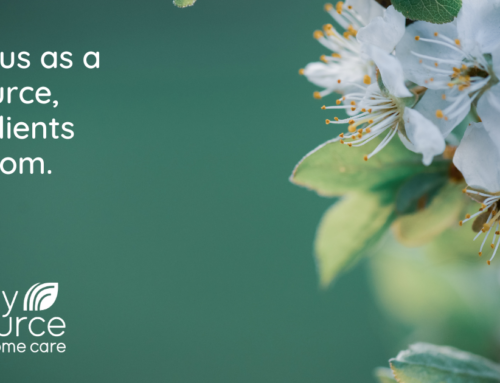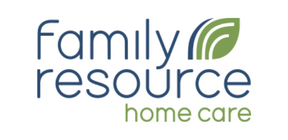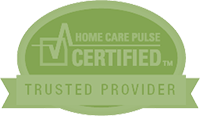As the Pacific Northwest starts to anticipate an increase in smoke from fires spreading across the country, it’s important to consider how smoke inhalation will affect the elderly. This is a significant concern, especially for vulnerable populations such as seniors. Looking at its effects on the respiratory system, and specifically focusing on the unique risks and complications faced by older adults, this is something to take precautions for. By understanding the symptoms, risk factors, prevention methods, and potential complications associated with smoke inhalation, we can promote inclusive health practices and better protect the elderly from its harmful effects.
Smoke Inhalation and Its Effects:
Inhaling smoke occurs when the respiratory system is exposed to smoke from a fire, leading to damage to the airways and lungs. It can cause various symptoms, including wheezing, difficulty breathing, coughing, and runny nose. For the elderly, these symptoms can be more severe due to their reduced physiological reserves.
Symptoms of Smoke Inhalation:
The common symptoms of smoke inhalation in the elderly may include cough, dark-colored mucus from the nose or mouth, drowsiness, headache, hoarse voice or trouble speaking, nausea, noisy breathing, runny nose, and wheezing. It is crucial to recognize and address these symptoms promptly to ensure proper medical intervention. Having a scheduled caregiver that regularly performs wellness checks can be helpful in these situations when inhaling smoke is inevitable from nearby fires.
Understanding the Causes and Risk Factors:
Smoke inhalation is primarily caused by exposure to smoke from fires, household chemicals, other irritants, or intense wildfires in nearby areas. Older adults face a higher risk of complications due to factors such as age-related physiological changes, pre-existing heart or lung conditions, and reduced respiratory reserve.
Preventive Measures:
Taking preventive measures can significantly reduce the risk of smoke inhalation for the elderly. These include preparing for fire seasons, staying indoors during fires, using particulate masks like N95 masks, having necessary medications on hand for pre-existing conditions, ensuring working carbon monoxide detectors, and paying attention to local air quality reports.
Diagnosing Smoke Inhalation:
Medical professionals diagnose smoke inhalation by performing a comprehensive examination and conducting tests such as blood tests to measure oxygen and carbon monoxide levels, chest X-rays to assess lung damage, and bronchoscopy for direct visualization of lung damage or related issues.
Treating Smoke Inhalation:
Treatment for smoke inhalation aims to improve oxygen saturation, minimize burns and damage caused by smoke, and promote optimal breathing. It may involve the use of oxygen masks, breathing tubes, bronchodilator medications, and ventilators if necessary. Prompt medical intervention is essential for the elderly to ensure better outcomes.
Home Care and Recovery:
After receiving medical treatment, individuals can promote their recovery at home by getting plenty of rest, taking prescribed medications, avoiding exposure to secondhand smoke, avoiding lung irritants, and using tools like spirometers to monitor lung function.
Potential Complications:
Prolonged or dense inhalation of smoke can lead to various complications, including suffocation, poisoning, damage to the airways, burns to the mouth or throat, and even coma. It is crucial to address smoke inhalation promptly to mitigate the risk of these complications, especially for the elderly.
Impact on Life Expectancy:
Unfortunately, being exposed to smoke for long periods of time can have long-term consequences for the elderly. Research indicates that repeated exposure to smoke can increase the risk of asthma in children and lead to a higher rate of stroke and heart attacks in older adults. Firefighters exposed to wildfire smoke have also shown a decreased life expectancy by approximately 10 years.
Smoke inhalation poses significant risks to individuals, particularly the elderly. By understanding the symptoms, risk factors, prevention methods, and potential complications associated we can better protect the elderly and promote their inclusive health. Timely medical intervention, preventive measures, and awareness can help minimize the impact of smoke inhalation on their respiratory health and overall well-being. Caregivers can play a vital role in ensuring the well-being of the elderly and minimizing the risks associated with inhaling smoke during the wildfire season. Caregivers can provide valuable assistance by closely monitoring the air quality and staying updated on local fire conditions. They can help create a safe indoor environment by ensuring proper ventilation, using air purifiers, and sealing off any gaps or cracks that may allow smoke to enter the living space. Caregivers can also help seniors adhere to preventive measures such as wearing particulate masks, taking prescribed medications, and staying hydrated. Additionally, caregivers can provide emotional support, reassuring the elderly during stressful situations and ensuring they feel safe and protected. Regular wellness checks, including monitoring symptoms related to smoke inhalation, are essential to detect any changes promptly and seek medical attention if necessary. By being proactive, well-informed, and compassionate, caregivers can play a crucial role in safeguarding the health and well-being of the elderly during wildfire seasons and minimizing the impact of smoke inhalation. If you’d like to learn more about our caregiver services for this summer, contact us!
Source:






